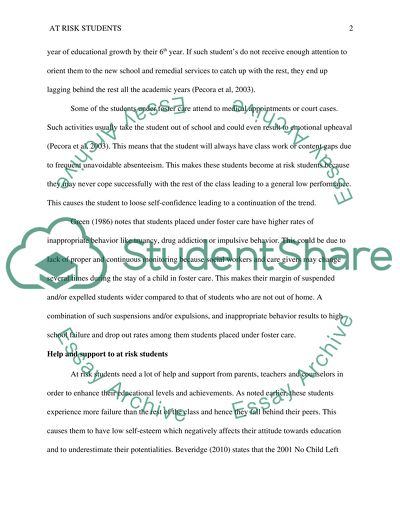Cite this document
(“At Risk Students- Students at risk of school failure with an emphasis Research Paper”, n.d.)
Retrieved from https://studentshare.org/family-consumer-science/1419610-at-risk-students-students-at-risk-of-school
Retrieved from https://studentshare.org/family-consumer-science/1419610-at-risk-students-students-at-risk-of-school
(At Risk Students- Students at Risk of School Failure With an Emphasis Research Paper)
https://studentshare.org/family-consumer-science/1419610-at-risk-students-students-at-risk-of-school.
https://studentshare.org/family-consumer-science/1419610-at-risk-students-students-at-risk-of-school.
“At Risk Students- Students at Risk of School Failure With an Emphasis Research Paper”, n.d. https://studentshare.org/family-consumer-science/1419610-at-risk-students-students-at-risk-of-school.


